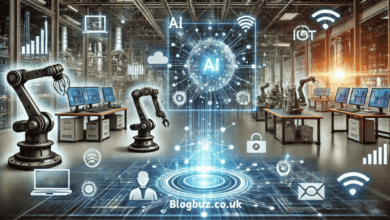MLOps vs. AIOps: The Key Differences You Need to Know

In the rapidly evolving landscape of artificial intelligence and machine learning, two terms have gained significant traction: MLOps and AIOps. While they may sound similar, these concepts serve distinct purposes in the world of technology. As an expert in the field, I’m here to demystify the key differences between MLOps and AIOps, helping you navigate this complex terrain with confidence.
Understanding AIOps: The Future of IT Operations
Before we dive into the comparison, let’s start by clarifying the AIOps meaning. AIOps, short for Artificial Intelligence for IT Operations, represents a groundbreaking approach to managing IT infrastructure and operations. By leveraging machine learning and big data analytics, AIOps aims to automate and enhance various IT operational processes.
The primary goal of AIOps is to improve the efficiency and reliability of IT systems by:
- Automating routine tasks
- Predicting and preventing IT issues
- Enhancing incident management
- Providing valuable insights for decision-making
AIOps has become increasingly crucial as organizations grapple with the complexity of modern IT environments, including cloud infrastructure, microservices, and distributed systems.
MLOps: Bridging the Gap Between ML Development and Operations
On the other hand, MLOps, or Machine Learning Operations, focuses on streamlining the end-to-end machine learning lifecycle. It encompasses the practices and tools needed to deploy, monitor, and maintain machine learning models in production environments.
Key aspects of MLOps include:
- Version control for ML models and data
- Automated testing and validation of models
- Continuous integration and deployment (CI/CD) for ML pipelines
- Model performance monitoring and retraining
MLOps aims to bring the same level of rigor and efficiency to machine learning development that DevOps brought to software development.
AIOps vs MLOps: Similarities and Differences
Now that we’ve established the basics, let’s explore the key differences between AIOps and MLOps:
1. Focus and Scope
AIOps: Primarily concerned with optimizing IT operations across the entire organization. MLOps: Specifically targets the machine learning development and deployment process.
2. Application of AI
AIOps: Applies AI techniques to improve IT operations and infrastructure management. MLOps: Focuses on managing and optimizing the lifecycle of AI and ML models themselves.
3. Primary Users
AIOps: IT operations teams, system administrators, and DevOps professionals. MLOps: Data scientists, machine learning engineers, and ML model developers.
4. Key Objectives
AIOps:
- Automate IT operations
- Enhance system performance and reliability
- Improve incident response and resolution
MLOps:
- Streamline ML model development and deployment
- Ensure reproducibility and version control of ML experiments
- Facilitate collaboration between data scientists and operations teams
5. Tools and Technologies
While there may be some overlap, AIOps and MLOps typically employ different sets of tools:
AIOps tools often include:
- Event correlation and analysis platforms
- IT service management (ITSM) integrations
- Automated root cause analysis tools
MLOps tools typically encompass:
- Model versioning systems
- Feature stores
- Model serving platforms
- Experiment tracking tools
The Interplay Between AIOps and MLOps
Despite their differences, AIOps and MLOps are not mutually exclusive. In fact, they can complement each other in several ways:
- AIOps can leverage ML models developed through MLOps practices to enhance IT operations.
- MLOps can benefit from AIOps insights to optimize the infrastructure supporting ML model deployment.
- Both disciplines share a common goal of improving operational efficiency through automation and data-driven decision-making.
As organizations increasingly rely on AI and ML technologies, understanding the nuances of AIOps vs MLOps becomes crucial for effective implementation and management of these advanced systems.
Choosing Between AIOps and MLOps
When deciding whether to focus on AIOps or MLOps, consider the following factors:
- Organizational needs: Are you primarily looking to improve IT operations or streamline ML model development?
- Existing infrastructure: What tools and processes do you already have in place?
- Team expertise: Do you have more IT operations specialists or data scientists on your team?
- Long-term goals: Are you aiming to enhance overall IT efficiency or accelerate AI/ML innovation?
By carefully evaluating these factors, you can determine which approach aligns best with your organization’s objectives and resources.
Conclusion: Embracing the Future of AI-Driven Operations
As we’ve explored, AIOps and MLOps represent two distinct yet interconnected approaches to leveraging artificial intelligence in modern technology operations. While AIOps focuses on enhancing IT operations through AI-driven insights, MLOps aims to streamline the machine learning lifecycle from development to deployment.
Understanding the key differences between AIOps vs MLOps is essential for organizations looking to harness the full potential of AI and ML technologies. By implementing the right practices and tools, businesses can significantly improve their operational efficiency, accelerate innovation, and stay ahead in an increasingly competitive landscape.
Are you ready to take your ML operations to the next level? If you’re looking to implement robust MLOps practices in your organization, consider exploring professional MLOps consulting services.




